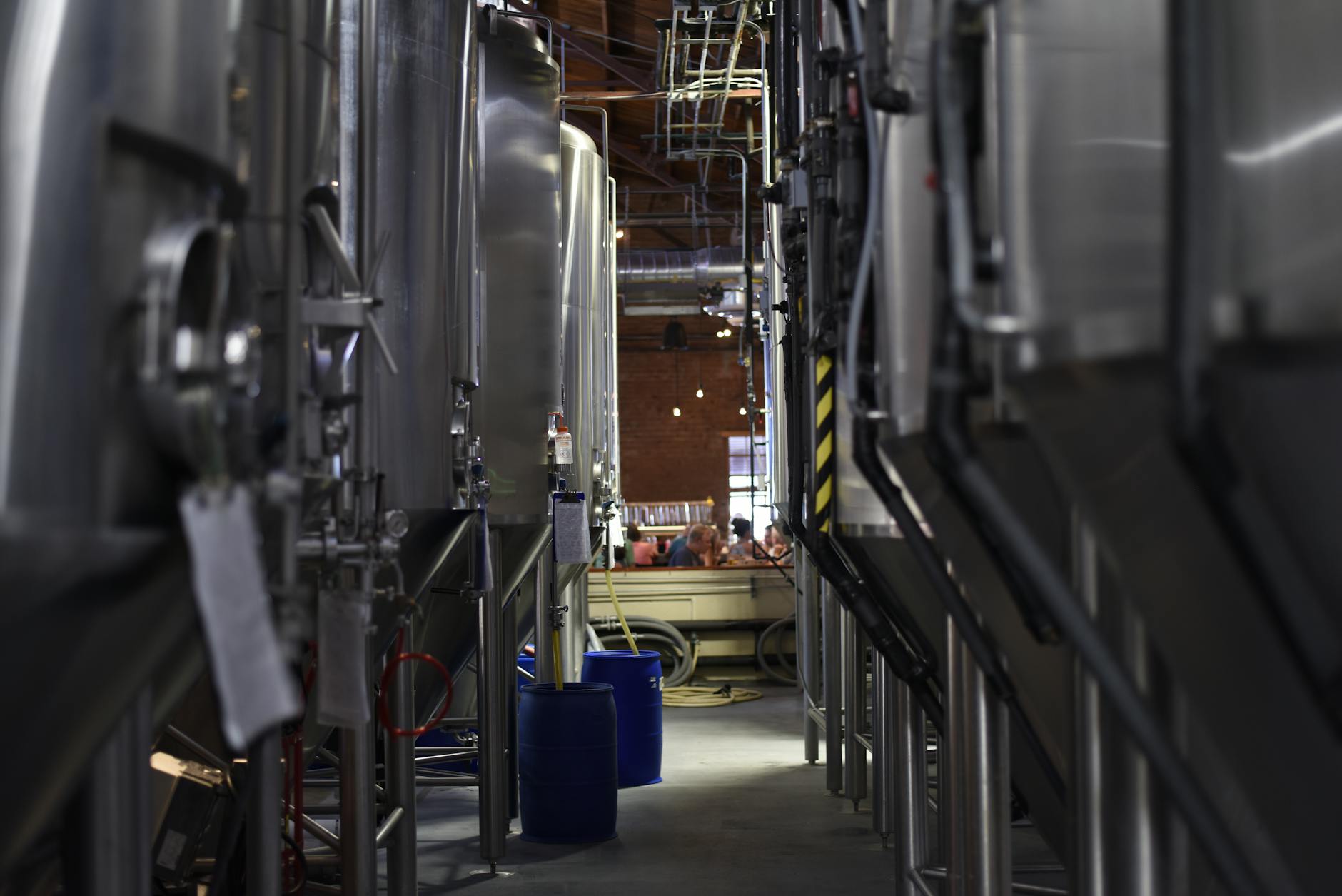Why Acoustic Engineering is Key to Innovation in Australia's Aerospace Sector

Acoustic Engineering Foundations
Core Principles and Theories
In the field of acoustic engineering, understanding the foundational principles is paramount for any professional in the aerospace industry. The basic tenets involve the transmission, absorption, and reflection of sound waves, which play a significant role in designing effective solutions. Acoustic panels are instrumental in managing these elements, creating environments where sound is both contained and controlled. For those of us working in Adelaide, the Royal Adelaide Showground hosts tech exhibits that are perfect settings to witness practical demonstrations of the theories in action.
Applications in Aerospace
Applying acoustic principles in aerospace involves a multifaceted approach that quite literally takes sound management to new heights. In aircraft design, the use of advanced materials such as acoustic composites helps in reducing cabin noise levels, enhancing passenger comfort without adding excessive weight. As someone who deals with home entertainment systems, I understand the value of integrating efficient noise-cancellation technologies—similar concepts apply to aircraft, where achieving optimal acoustic performance is crucial for both functionality and safety.
Innovative Techniques and Tools
Innovation thrives on the ability to adapt and utilise the latest tools. In the realm of acoustic engineering, data projectors can simulate soundscapes, offering visual representation of acoustic properties in various environments. Using a motorised projector screen can elevate presentations, allowing for precise demonstrations of sound distribution patterns. Meanwhile, a high-quality recording microphone is essential for capturing sound accurately during testing and analysis. Such tools are indispensable for verifying that design implementations meet the desired acoustic standards.
Aerospace Industry Needs
Challenges in Aircraft Sound Design
Mastering aircraft sound design involves overcoming substantial challenges, especially in maintaining a balance between performance and acoustics. As a tech-savvy professional in the aerospace industry, you already know the importance of mitigating noise without compromising other vital functionalities. For instance, leveraging cutting-edge tools like data projectors during simulations can enhance virtual mock-ups of soundscapes, allowing for accurate predictions and fine-tuning of acoustic elements.
In close proximity to the University of Adelaide, tech exhibits often present new methods and technologies that can be instrumental in addressing these challenges. One prevalent difficulty is managing the complex interplay between aerodynamics and acoustics, requiring an intricate understanding of both disciplines.
Noise Reduction Imperatives
Noise reduction is crucial in aerospace engineering. It requires a strategic approach to enhance aircraft performance while ensuring passenger comfort and adhering to strict regulatory standards. Incorporating a professional microphone into your existing toolkit can offer precise measurements and analyses needed to fine-tune soundproofing materials and techniques. These microphones are indispensable at tech expos like those at the Royal Adelaide Showground, where professionals discuss innovations in noise reduction.
Enhancing Aircraft Performance
Enhancing aircraft performance involves more than just engine efficiencies. Effective acoustic management ensures that noise levels are optimised alongside other aeronautical advancements. To facilitate a seamless user experience, incorporate a universal remote designed for intuitive control of testing environments. The synergy between acoustic improvements and performance yields tangible benefits: enhanced operational efficiency and improved passenger satisfaction. By aligning your strategies with these engineering insights, you ensure that sound design integrates seamlessly with modern aerospace advancements.
Role in Innovation
Improving Efficiency with Acoustics
When discussing innovation in the aerospace sector, acoustics play a critical role in enhancing operational efficiency. As professionals who frequent the Royal Adelaide Showground for tech exhibits would know, an improved acoustic environment can lead to more efficient communication in ground control rooms and aircraft cabins. Leveraging technologies such as mesh radios can further streamline communication systems, ensuring the clarity crucial for both safety and performance in fast-paced aerospace environments.
Designing Next-Gen Aircraft
In an era where design and functionality continually evolve, the aerospace industry is integrating advanced acoustic strategies to design the aircraft of the future. Professionals from the University of Adelaide will appreciate how next-gen designs demand a balance of acoustics and aerodynamics to minimise noise pollution and enhance passenger comfort.
With the use of av cables, modern aircraft incorporate sophisticated audio systems that not only improve in-flight entertainment but also help attain optimal cabin noise levels through sound masking.
Contribution to Sustainable Aviation
In the push towards sustainability, acoustics offer transformative potential within aviation. Well-designed acoustic panels and insulation materials not only lower noise levels but also contribute to energy efficiency by reducing the need for additional power-consuming noise control systems. Aerospace professionals, like those networking at the Adelaide Entertainment Centre, understand the growing importance of environmental mindfulness and energy conservation in this industry.
Incorporating acoustics into the design process can yield sustainable advantages, ultimately leading to quieter, greener flights that meet both ecological goals and consumer expectations.
Best Practices
Integrating Acoustics in Design
Integrating acoustics into aerospace design is crucial for achieving optimal functionality and passenger comfort. The use of acoustic panels plays a pivotal role in this, providing effective soundproofing and vibration damping in cabin interiors. These panels are essential in reducing unwanted noise levels, making flights more pleasant for passengers and crew.
Engineering teams should incorporate acoustic considerations from the outset of the design phase. This ensures that sound control doesn't take a backseat to other design elements. Moreover, it is vital to use simulations and data projections to fine-tune acoustic efficiency throughout the development process.
Collaboration with Aerospace Engineers
A collaboration between acoustic consultants and aerospace engineers is necessary for crafting superior solutions. At places like the Royal Adelaide Showground, where tech exhibits showcase collaborative innovations, professionals can gather not just to showcase, but to ideate and refine technologies in real-time. It's at these junctures where the integration of systems like the antenna tracking system can also be witnessed, enhancing the communication and navigation capabilities of aircraft without compromising acoustic integrity.
Implementing Eco-Friendly Solutions
Eco-friendly acoustics are becoming increasingly crucial in aerospace design. Selecting sustainable materials for acoustic treatment not only benefits the environment but can also result in lightweight components, which reduce overall fuel consumption. It's about balancing the need for high-performance materials with environmental responsibility—always seeking new, innovative materials that satisfy both criteria.
In essence, best practices in the aerospace industry entail a balance between advanced acoustic techniques and innovative collaboration to foster an environment where sustainability and customer satisfaction can simultaneously thrive.
Addressing Challenges in Aerospace Acoustics
Balancing Cost and Quality
As aerospace professionals, we know the importance of maintaining a delicate balance between cost efficiency and the high-quality acoustic solutions required for aircraft. Achieving optimal results often involves leveraging cutting-edge materials and processes. For instance, utilising advanced composites not only enhances acoustic panelling solutions but also contributes to overall weight reduction. When examining the cost-quality equation, adopting a modular approach to design allows for incremental improvements, which can be showcased during tech exhibits at the Royal Adelaide Showground.
Navigating Regulatory Standards
Regulatory compliance remains a significant challenge, especially as global standards for aircraft noise continue to evolve. In Australia, engaging with the discussion forums at the University of Adelaide can provide insights into the latest legislative developments. It's crucial to align acoustic engineering practices with national and international standards to ensure our designs remain market competitive. By staying abreast of regulatory changes, we can better anticipate how they will affect the integration of data projectors and other technology.
Overcoming Technological Barriers
Technical barriers often arise when implementing innovative acoustic solutions. These can include limitations in existing infrastructure or technological compatibility issues. Collaborating at networking events like those at the Adelaide Entertainment Centre can be invaluable for exchanging practical engineering tips. Here, professionals discuss strategies for overcoming such obstacles, including using adaptive technologies and software solutions designed for optimizing acoustic design in aircraft. Adopting a collaborative mindset and pooling expertise across disciplines is key to surmounting these barriers.


